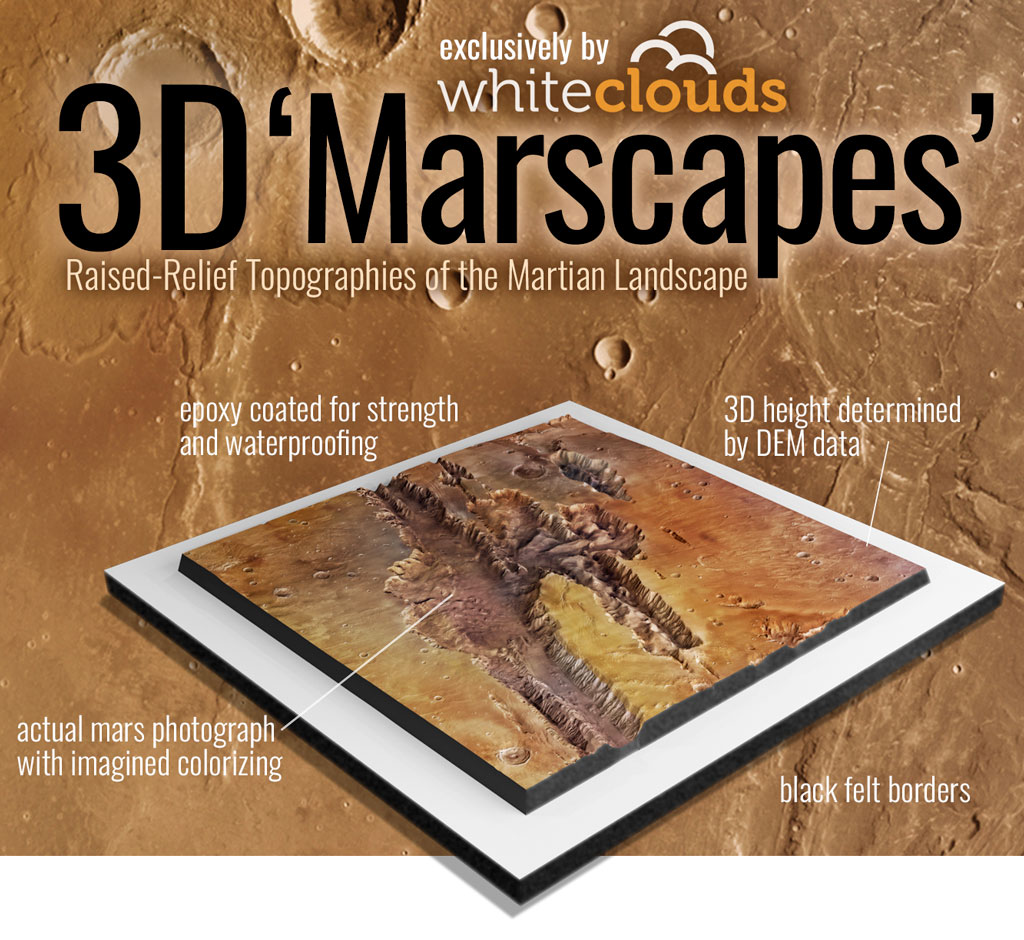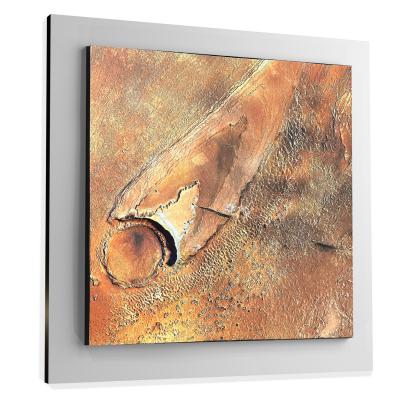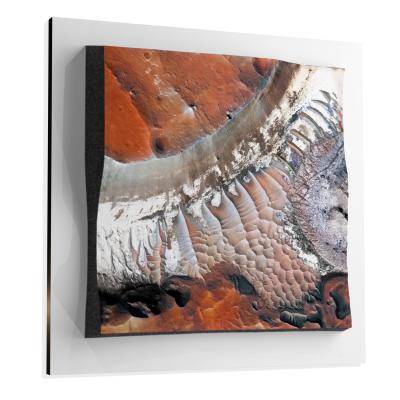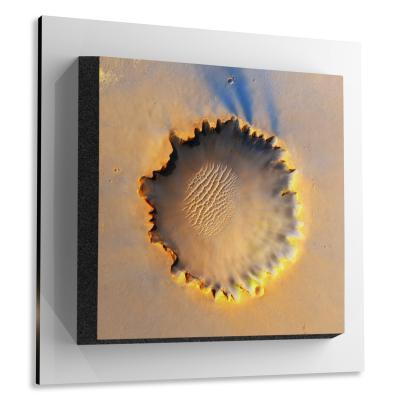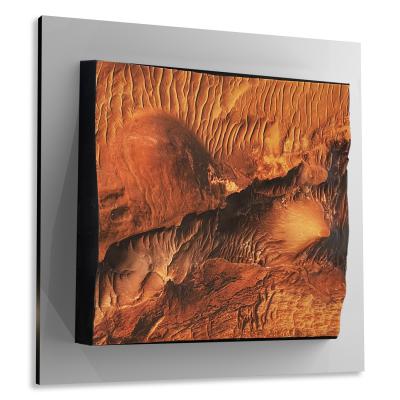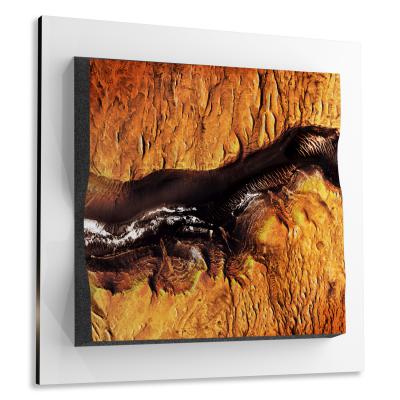Kasei Channels
Kasei Channels
We Build Custom 8K Mars Canvas Prints of Kasei Channels
Did you know we make
custom
8K Mars Canvas Prints

and
3D Marscapes

Kasei Channels
The Kasei Channels are a vital subject of scientific interest, offering a window into the geological history and potential past hydrological cycles of Mars. The channels provide not only insights into the red planet’s unique geography but also clues regarding ancient water flows that might have existed on Mars. As a compelling feature in the Martian landscape, the Kasei Channels have been the subject of several scientific missions, each aimed at understanding various aspects from their formation to their significance in the bigger Martian picture.
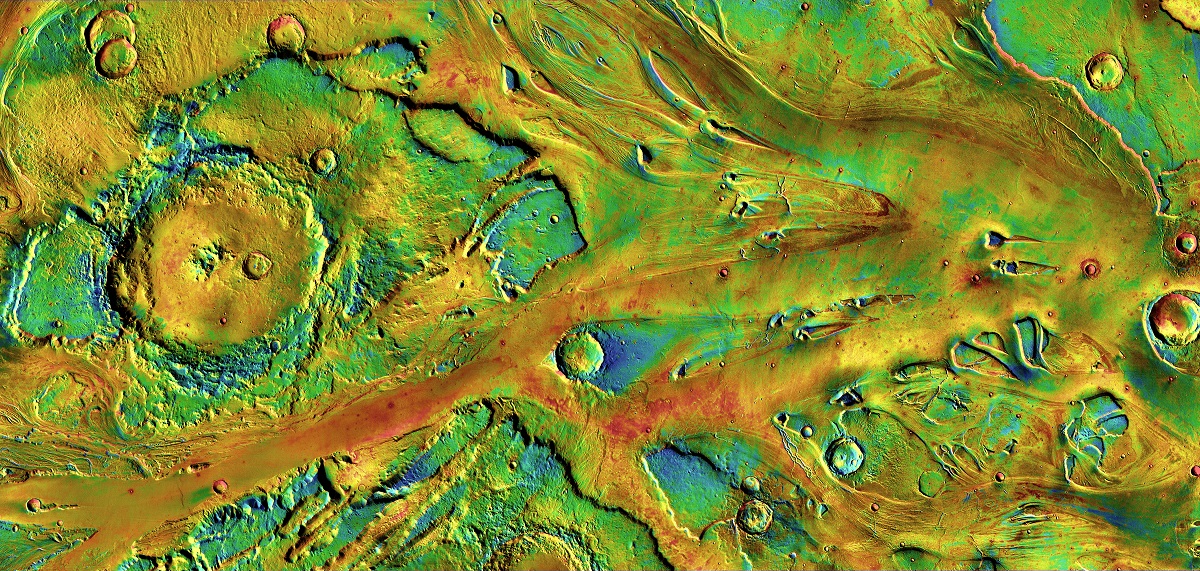 Kasei Channels
Kasei Channels
Geographical Location
The Kasei Channels are a prominent geomorphological feature located in the expansive Tharsis region of Mars. Specifically, they stretch across a striking distance of approximately 1,580 miles (2,540 km), making them one of the largest and most fascinating outflow channels on the Martian surface. Originating in the vicinity of the volcanic highlands of the Tharsis plateau, the channels extend in a mainly eastward direction, finally draining into the vast plains of Chryse Planitia. This circular plain lies in the northern equatorial region of Mars and is renowned for its low elevation, which has fueled speculations about its role as a basin for ancient water flows. Geographically, the Kasei Channels are positioned roughly around 24°N latitude and 65°W longitude. Their strategic location in proximity to other extraordinary Martian landmarks such as the colossal Tharsis volcanic plateau and Valles Marineris— the largest canyon system known in the solar system— renders them a vital puzzle piece in understanding the geological, hydrological, and climatological evolution of Mars.
Advertisement
Sample Marscapes
Geological Composition
The geological tapestry of the Kasei Channels is rich and diverse, presenting an array of rock formations that have been predominantly identified as sedimentary. The channel walls and floors exhibit rock layers composed of various material types including basalts, clays, and sulfates. Each of these materials carries a unique signature of Mars’ geological past, suggesting a complex history marked by multiple phases of aqueous alteration, sedimentary deposition, and erosional activities. Eroded banks within the channels are characterized by a layered structure that supports the hypothesis of periodic water flow, possibly stemming from catastrophic flood events or glacial melt. Adding to the complexity are sedimentary formations like terracing, which suggests episodic and rhythmic flow events. Various sizes of boulders and conglomerate deposits within the channel have been identified, pointing to significant past movements of water or ice that transported these materials over substantial distances.
Significant Discoveries
Evidence of Ancient Water Flows
The geomorphological features and sedimentary formations within the Kasei Channels provide compelling evidence for ancient water flow, whether it was in the form of slow-moving rivers or cataclysmic floods. he very structure of the channels, which includes meandering patterns and anabranching segments, resembles those found in fluvial systems on Earth. Erosional features, such as terracing and sediment depositions, support the notion of a dynamic hydrological past for the region.
Ancient Sediment Depositions
Diverse sedimentary layers within the Kasei Channels offer a geological timeline of the Martian environment. From varying types of basalts to clays and sulfates, the stratified sediments potentially represent multiple epochs of Martian history. This layering provides crucial data for understanding how climate, surface conditions, and possibly even biological factors might have evolved on Mars over time.
Scientific Missions
Several missions have aimed their scientific instruments at the Kasei Channels to unravel their mysteries. Notably, the Viking Orbiters in the late 20th century laid the initial groundwork by providing the first detailed imagery. The Mars Global Surveyor, with its laser altimeter, offered elevation data that further contributed to our understanding of these channels. In more recent times, NASA’s Mars Reconnaissance Orbiter has utilized its High-Resolution Imaging Science Experiment (HiRISE) to offer an unparalleled close-up view of the channel features. On the European front, the Mars Express Orbiter, equipped with the High-Resolution Stereo Camera (HRSC), has also rendered detailed three-dimensional models and compositions of the channels. Each mission has offered unique datasets that have cumulatively enriched our understanding of the formation, structure, and geological history of this captivating Martian feature.
Geomorphological Features
When it comes to geomorphology, the Kasei Channels are a textbook example of complexity and diversity. They showcase a variety of patterns, including meandering and anabranching structures that signal a multi-faceted history of fluid flow. Distinct terracing within the channels indicate various levels and episodes of water activity, each potentially corresponding to different geological epochs on Mars. The presence of boulders and sediment depositions scattered within the channels point to the mechanical forces exerted by past flows of water or possibly glacial activities. These sedimentary features are particularly valuable in shedding light on how erosion and deposition have shaped Martian landscapes over eons. Additionally, the geomorphological intricacies bear a resemblance to similar features found on Earth, offering an intriguing lens through which to conduct comparative planetology.
The Kasei Channels are a remarkable feature on the Martian landscape, providing valuable insights into the planet’s geological history and potential water-related activities. Their geographical location, geological composition, and geomorphological characteristics make them a focal point for scientific research. Various missions have expanded our understanding of these channels, but many questions remain. Ongoing and future missions are expected to further unravel the mysteries surrounding Kasei Channels, contributing to broader questions about Mars’ history and its suitability for life. As we continue to probe Mars’ surface and collect more data, the Kasei Channels will undoubtedly remain a cornerstone in the quest to understand the red planet.
Check out our 3D Mars Learning Center for more information on Mars and Kasei Channels. You can also learn more at: NASA Mars Exploration.
More About Mars
Contact us today to learn more about our 3D services and how we can help you achieve your goals.
